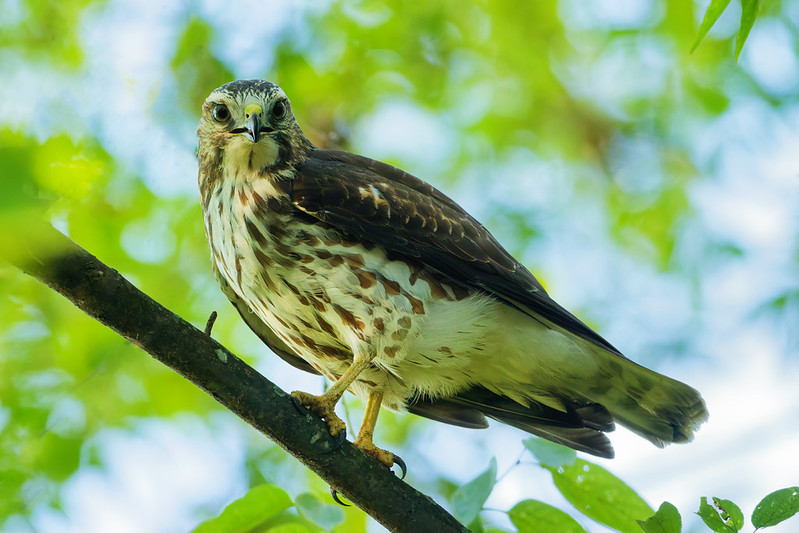On a quiet morning in late September, I spotted an immature Broad-winged Hawk at the Sequoyah National Wildlife Refuge in Oklahoma. The bird flew across the road in front of my truck and landed on a branch just a few yards away. It was one of those lucky wildlife moments that makes me stop everything and reach for the camera.
Wildlife Notes

The hawk perched in a shady area near Baker’s Field along the north auto tour road. I could tell it was a young bird by its streaked chest and pale eyes. Immature Broad-winged Hawks often linger in the region during fall migration before continuing south.
These hawks are small but powerful raptors that favor wooded habitats near water. They hunt by waiting quietly from a perch and striking small prey like frogs, snakes, and insects. Their call is a high, piercing whistle that echoes through the forest canopy.
This individual stayed in view for a few minutes, giving me time to capture several frames before it glided off to another tree. Encounters like this remind me how much life hides in the shaded corners of the refuge.
Photography Notes
Lighting was difficult that morning. The hawk sat in deep shade, so I had to push my ISO to 6400 to keep the shutter speed fast enough for a clear shot. I set my exposure compensation to +0.7 to help lift shadow detail. Even though it wasn’t ideal light, the Canon EF 500mm lens gave me enough reach to fill the frame without disturbing the bird.
Image Information:
Camera: Canon EOS R7
Lens: Canon EF 500mm f/4L IS USM
Aperture: f/5.6
Shutter Speed: 1/800 sec
ISO: 6400 (Auto)
Exposure Compensation: +0.7
Focal Length: 500mm
Thanks to my friend Mia for confirming the ID on this young Broad-winged Hawk. Having other bird photographers to compare notes with always helps when identifying immature raptors.
